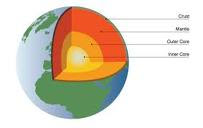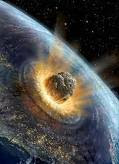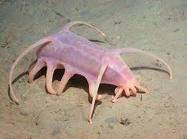1.angiosperm: Flowering plant.

2. archaebacterium: Member of the prokaryotic domain Archaebacteria.

3. Archean eon: Eon in which life arose (3.8-2.5 bya).

4. big bang: Model for origin of universe.

5.Cenozoic era: The present era (65 mya to present).

6.crust, of Earth: Outer zone of low-density rocks resting on the Earth's mantle.

7.dinosaur: One of a fabulous group of reptiles that originated in the Triassic and became the dominant land vertebrates for 125 million years.

8.Ediacaran: One of the species with a highly flattened body that arose in the precambrian.

9.endosymbiosis theory: Continuing physical contact between two species, one of which lives and reproduces inside the other's body.

10.eubacterium: Prokaryotic cell; has a nucleoid, but no nucleus, cytoplasm, or cell membrane; most have a cell wall, some encapsulated.

11.eukaryotic cell: Cell having a nucleus and other membrane-bound organelles.

12.global broiling hypothesis:Theory that an asteroid impact caused the K-T mass extinction by creating a colossal fireball, the debris from which raised global air temperature by thousands of degrees.

13. gymnosperm: Type of vascular plant in which seeds form on exposed surfaces of reproductive structures (e.g., on cone scales).

14. K-T asteroid impact theory: A huge asteroid hit Earth at the K-T bou
ndary; last dinosaurs perished during the mass extinction.

15. mantle Of mollusks: a tissue draped over the visceral mass. Of Earth, a zone of intermediatedensity rocks beneath the crust.

16. Mesozoic era: An era (240-65 mya) of spectacular expansion in the range of global diversity.

17. Paleozoic era: Era from Cambrian, Ordovician, Silurian, Devonian, Carboniferous, through the Permian (544 to 248 mya).

18. prokaryotic cell: Archaebacterium or eubacterium; single-celled organism, most often walled; lacks the profusion of membranebound organelles observed in eukaryotic cells.

19. Proterozoic eon: Period from 2.5 billion to 570 million years ago; period during which eukaryotic cells arose.

20. protistan: Photoautotroph or heterotroph (or both) unlike bacteria; some like earliest eukaryotic cells. Has a nucleus, larger ribosomes, mitochondria, ER, Golgi bodies, chromosomes with numerous proteins, and cytoskeletal microtubules. Range in size from microscopic algae to giant kelps.

21. proto-cell: Hypothetic cell-like stage between chemical evolution and the first living cell.

22. RNA world: One model for prebiotic evolution in which RNA was the template for protein synthesis before the evolution of DNA.

23. stromatolite: Fossilized mats of shallow-water microbial communities, mainly cyanobacteria, from Archean to precambrian. Cell secretions blocked UV radiation but trapped sediments, and new mats grew on old ones; some are half a mile thick and hundreds of miles across.


No hay comentarios:
Publicar un comentario